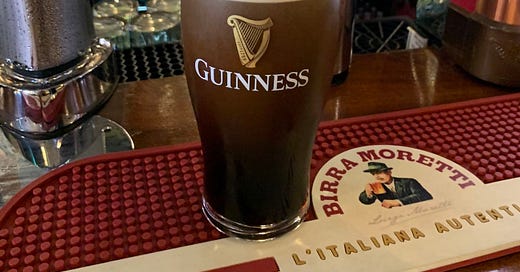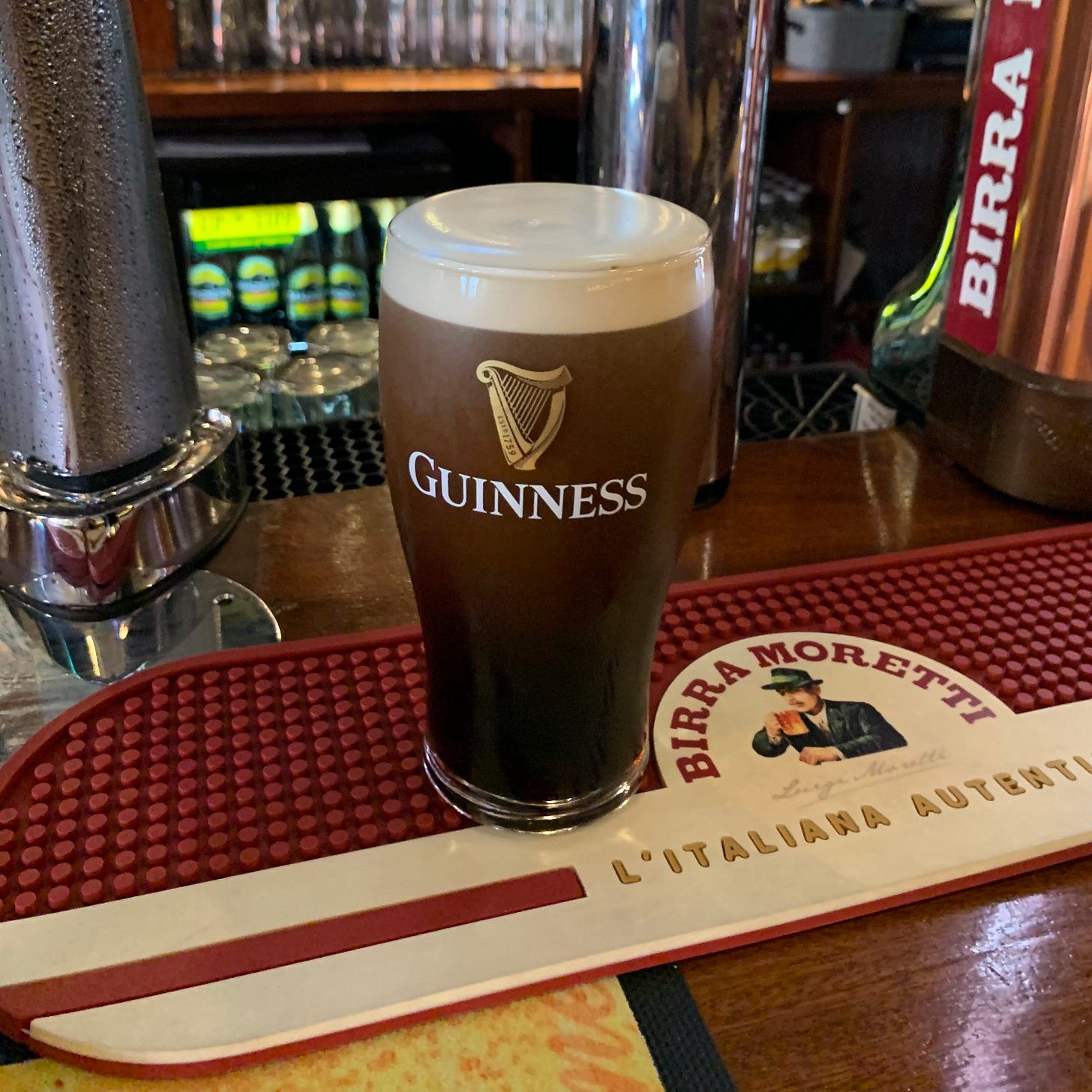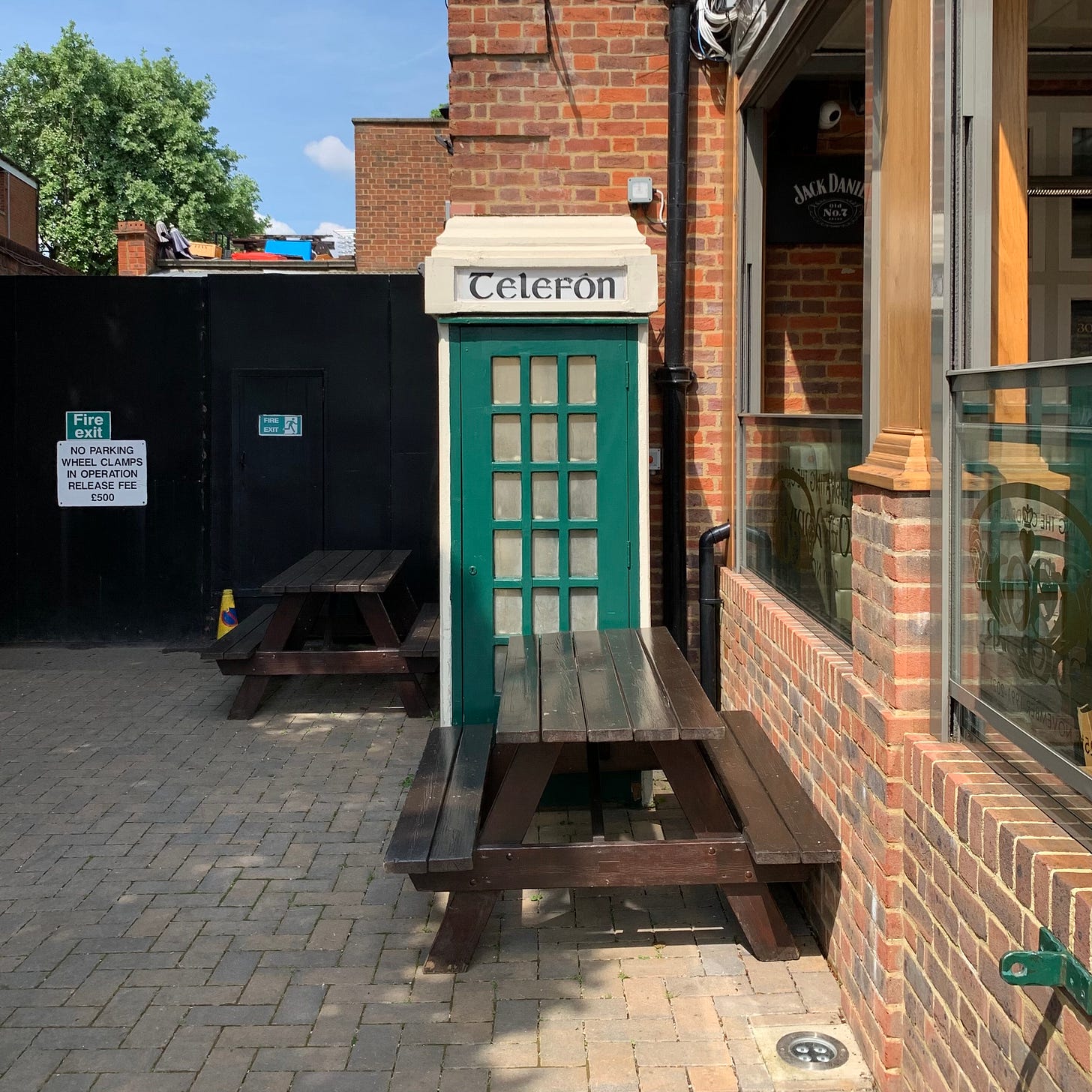Hello and welcome to Wooden City, a newsletter about London.
If you haven’t come here via @caffs_not_cafes, I'm a writer called Isaac Rangaswami and this is my Substack.
Every other week I publish an article about everyday places in London with unusual staying power, like shops, buildings, restaurants and public spaces.
Paid subscribers get access to full pieces and everything I’ve written so far. In case you missed it, here’s the previous issue on three dated restaurants.
Flick to the back of Nairn’s London, and you can count the number of pubs that the author mentions in his guide to the city and its buildings. Ian Nairn, who treated buildings like people, describes each of the 27 with the same lyrical intensity he assigns to every place, from Wren’s churches to the Grand Union Canal towpath in Park Royal.
Of the London pubs Nairn wrote about 58 years ago, Cricklewood’s The Crown wasn’t his favourite. But his entry has stayed with me, because he describes the pub as being “full of Irishmen”. Nairn’s writing always evokes a building’s character, like the hungriness of St John's Church in Stratford, but the people inside these places appear less often. Every time they do, I feel like I can see their faces, catching a slightly more vivid glimpse of the London he experienced.
The Crown still exists, though it isn’t my favourite either. It has the same imposing exterior that Nairn describes, but much of its insides have been altered. Its crowd has changed since Nairn’s day too. When I imagined people drinking inside this former Victorian gin palace in the 1960s, it reinforced a question that’s crossed my mind before: whether London used to be more Irish.
Half a million men and women left Ireland in the 1950s, according to the book An Unconsidered People: The Irish in London by Catherine Dunne. The same book notes that they included “four out of every five children born in Ireland between 1931 and 1941… 80% of them destined for Britain.” That generation of people helped to build the country’s roads, dig its tunnels and care for its sick, but were often mistreated by its populace. The parts of London this community settled in, such as Kilburn, have been changing for years. Meanwhile, the number of Irish-born people living in the capital and the UK more broadly has fallen steadily in recent decades.
My fascination with London’s oldest businesses is tied to the way immigrant communities like this have ebbed and flowed. It was through old caffs that I learned Soho once bustled with Italian people, just as Victorian Clerkenwell did a century before. I had a similar experience with the city’s historical bakeries, which taught me about the Jewishness of the East End, before that community filtered up to places such as Hendon, Stamford Hill and Golders Green.
When looking into London’s history of Irishness, I noticed that lists of “Irish pubs in London” didn’t include that many in the north-west of the city, despite that area’s long-standing Irish community. So I started drinking in places like Willesden, Harlesden, Hendon, Kilburn, Cricklewood, Wembley and Harrow. And the truth is that I underestimated how deeply Irish these pubs would be. But I also saw how their Irishness has transformed in some ways, and is capable of absorbing people from other communities that have made these areas home too.
I felt welcome in all these pubs, but like an intruder in some. It’s a feeling I’ve also experienced in some smaller Caribbean takeaways and halwa puri joints, as well as other places. Nobody told me so, but I sometimes felt like my position in the queue or seat at a table was really just taking up other customers’ hard-won space. And the more pubs I went to, the more I realised I had embarked on a particularly knotty enterprise: someone seeking out Irish places, who isn't Irish, outside of Ireland, in a city that has changed a great deal around its older outposts of Irishness.
But even if these pubs aren’t designed for everyone, I still think more people should be saying they’re important. So the list below includes several of these particularly intimate spaces, which signpost themselves well enough, as well as larger ones with a more mixed crowd.
The Claddagh Ring
You’ll find The Claddagh Ring in the higher part of Hendon: just beyond the library, the town hall and the wisteria-clad Middlesex University campus, where the area shakes off its main roadness for a villagey quaintness. When I was there, the guy behind the bar had an Irish accent, as did several of his customers. This included a man who sat down and asked what the specials were, before informing the barman that he didn’t like toad in the hole.
There were plenty of people with accents like mine too, some of them wearing local council lanyards. We were all sitting in a set of broad, open rooms lit by TVs and coloured lights, which made the place feel sports bar-like. Given its proximity to the uni, The Claddagh Ring also fulfils a dual role as a student pub. A pint of Guinness cost me £5.30, but if I’d been a Middlesex undergrad, it would have been £4.77.
10 Church Rd, London NW4 4EA




